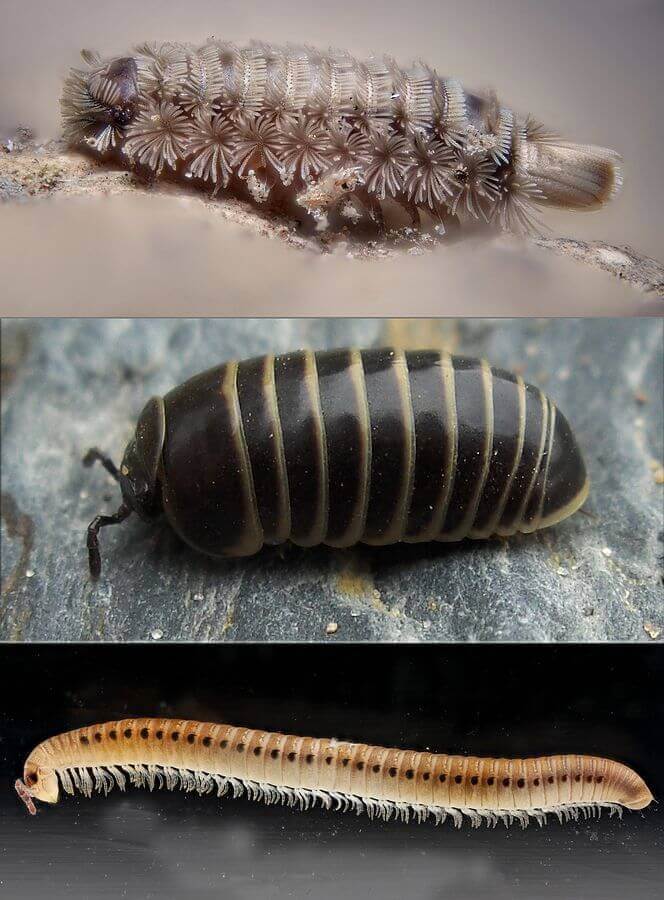Millipedes
Scientific Name: Diplopoda
Millipedes make their home in damp places outdoors under mulch, piles of dead leaves, rocks, or wood. They thrive in areas where soil continuously stays damp. During heavy rains and the fall season, they will migrate from their normal habitat and will often find their way into homes or offices.
Millipedes are low to the ground, so they enter homes through cracks in your foundation, basement doors and windows, and crawlspace vents. Crawl spaces are an ideal environment for this insect because they are damp, dark, and often used as storage areas providing millipedes with a place to hide.

By Top: Gilles San MartinMiddle: User:StemonitisLower:USGS Native Bee Inventory and Monitoring Laboratory [CC BY 2.5], via Wikimedia Commons
What Do Millipedes Look Like?
A millipede’s head is rounded above and flattened below, with a pair of large mandibles in front of a plate-like structure or “jaw lip”. They have a single pair of antennae and their eyes are on the sides of their head. Millipede bodies are flattened or cylindrical, and made up of segments, each with its own exoskeleton. Most of the segments contain one to two pairs of legs, depending on where they are located.
“Millipedes come in a variety of body shapes and sizes, ranging from 2 mm (0.079 in) to around 35 cm (14 in) in length,[6] and can have as few as eleven to over one hundred segments. They are generally black or brown in colour, although there are a few brightly coloured species. Body styles vary greatly between major millipede groups. In the basal subclass Penicillata, consisting of the tiny bristle millipedes, the exoskelton is soft and uncalcified, and is covered in prominent setae or bristles. All other millipedes, belonging to the subclass Chilognatha, have a hardened exoskeleton. The chilognaths are in turn divided into two infraclasses: the Pentazonia, containing relatively short-bodied groups such as pill millipedes, and the Helminthomorpha ("worm-like" millipedes), which contains the vast majority of species, and the long, many-segmented body types familiar to most people.”
Information provided by Wikipedia
Facts
- Some millipede species, like the ones in the Polydesmida order are completely blind.
- Young millipedes add segments and legs as they grow and mature.
- Millipedes do not do any damage indoors because they only eat rotting leaves, wood and other decaying plant matter.
Millipedes Control
To prevent a millipede infestation remove mulch and any dead vegetation that may be close to your house. Treat the perimeter around your home with an insecticide to keep this pest from reaching the exterior walls of your home. Do not forget to treat the outer foundation/basement wall, window frames, and door frames.
If you are unsure what insecticide to use, or are concerned about the safety of your children or pets, contact a pest control professional to diagnose the issue and provide treatment.
